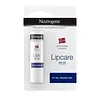What's inside
What's inside
 Key Ingredients
Key Ingredients

 Benefits
Benefits

 Concerns
Concerns

 Ingredients Side-by-side
Ingredients Side-by-side

Octyldodecanol
EmollientRicinus Communis Seed Oil
MaskingCera Alba
EmollientHelianthus Annuus Seed Cera
EmollientButyrospermum Parkii Butter
Skin ConditioningPolyglyceryl-3 Diisostearate
EmulsifyingButyl Methoxydibenzoylmethane
UV AbsorberEthylhexyl Triazone
UV AbsorberHydrogenated Castor Oil
EmollientWater
Skin ConditioningGlycerin
HumectantTocopherol
AntioxidantAscorbyl Palmitate
AntioxidantHelianthus Annuus Seed Oil
EmollientLinalool
PerfumingCitronellol
PerfumingCitral
PerfumingAroma
Octyldodecanol, Ricinus Communis Seed Oil, Cera Alba, Helianthus Annuus Seed Cera, Butyrospermum Parkii Butter, Polyglyceryl-3 Diisostearate, Butyl Methoxydibenzoylmethane, Ethylhexyl Triazone, Hydrogenated Castor Oil, Water, Glycerin, Tocopherol, Ascorbyl Palmitate, Helianthus Annuus Seed Oil, Linalool, Citronellol, Citral, Aroma
Ricinus Communis Seed Oil
MaskingParaffin
PerfumingCera Alba
EmollientEthylhexyl Methoxycinnamate
UV AbsorberIsodecyl Neopentanoate
EmollientIsopropyl Myristate
EmollientCetyl Palmitate
EmollientCetearyl Alcohol
EmollientButyl Methoxydibenzoylmethane
UV AbsorberCetyl Alcohol
EmollientCera Microcristallina
Emulsion StabilisingVp/Eicosene Copolymer
Isohexadecane
EmollientBisabolol
MaskingPropylene Glycol
HumectantStearic Acid
CleansingPalmitic Acid
EmollientSodium Cetearyl Sulfate
CleansingCandelilla Cera
EmollientCitric Acid
BufferingDisodium Phosphate
BufferingPotassium Phosphate
BufferingBHT
AntioxidantParfum
MaskingCI 77891
Cosmetic ColorantRicinus Communis Seed Oil, Paraffin, Cera Alba, Ethylhexyl Methoxycinnamate, Isodecyl Neopentanoate, Isopropyl Myristate, Cetyl Palmitate, Cetearyl Alcohol, Butyl Methoxydibenzoylmethane, Cetyl Alcohol, Cera Microcristallina, Vp/Eicosene Copolymer, Isohexadecane, Bisabolol, Propylene Glycol, Stearic Acid, Palmitic Acid, Sodium Cetearyl Sulfate, Candelilla Cera, Citric Acid, Disodium Phosphate, Potassium Phosphate, BHT, Parfum, CI 77891
Ingredients Explained
These ingredients are found in both products.
Ingredients higher up in an ingredient list are typically present in a larger amount.
Also known as Avobenzone, this ingredient is a chemical sunscreen filter that provides protection in the UV-A range.
Avobenzone is globally approved and is the most commonly used UV-A filter in the world.
Studies have found that avobenzone becomes ineffective when exposed to UV light (it is not photostable; meaning that it breaks down in sunlight). Because of this, formulations that include avobenzone will usually contain stabilizers such as octocrylene.
However, some modern formulations (looking at you, EU!) are able to stabilize avobenzone by coating the molecules.
Avobenzone does not protect against the UV-B range, so it's important to check that the sunscreen you're using contains other UV filters that do!
The highest concentration of avobenzone permitted is 3% in the US, and 5% in the EU.
Learn more about Butyl MethoxydibenzoylmethaneCera alba is beeswax, or the wax used by bees to make honeycombs. It is a texture-enhancer and emollient. A study from 2003 found beeswax to be a stronger emollient than ingredients such as petroleum jelly.
As an emollient, beeswax helps hydrate the skin by creating a barrier on top. This barrier traps moisture in.
Emulsifiers help prevent ingredients from separating. This helps create consistent texture.
The structure of beeswax is mainly long-chain alcohols and the esters of fatty acids.
There are three types of beeswax: yellow, white, and absolute. Yellow is pure beeswax taken from the honeycomb. White beeswax is created by filtering or bleaching yellow beeswax. Absolute beeswax is created by treating beeswax with alcohol. Beeswax used in cosmetics are purified.
Beeswax has been used throughout history and even in prehistoric times. Some common uses for beeswax still used today are making candles, as a waterproofing agent, and polish for leather.
Learn more about Cera AlbaRicinus Communis Seed Oil is the INCI name for castor oil.
Castor Oil helps moisturize the skin. It is rich in a fatty acid called ricinoleic acid. This fatty acid helps prevent moisture loss on the skin. This helps keep your skin soft and hydrated. Ricinoleic acid also has anti-inflammatory and pain reducing properties.
Besides hydrating the skin, castor oil is also used to hydrate hair. By keeping the hair shaft moisturized, breakage is decreased. More studies are needed to show castor oil's effective on stimulating hair growth.
Castor oil is created by cold-pressing castor seeds and then purifying the oil with heat. It was used in Ancient Egypt as fuel in lamps and to help treat eye irritation.
The term 'fragrance' is not regulated in many countries. In many cases, it is up to the brand to define this term. For instance, many brands choose to label themselves as "fragrance-free" because they are not using synthetic fragrances. However, their products may still contain ingredients such as essential oils that are considered a fragrance.
Learn more about Ricinus Communis Seed Oil